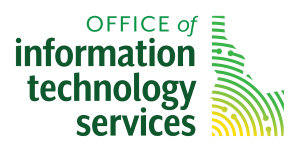The System Administration team plays a crucial role in ensuring the efficiency, reliability, and performance of our organization’s IT infrastructure. Our responsibilities encompass a wide range of tasks.
Service Includes
- Setup, configuration, and maintenance of servers, both physical and virtual, to ensure optimal performance and availability
- Plan and execute migration of data within our Active Directory environment, ensuring a seamless transition
- Oversee the implementation and maintenance of the ServiceNow platform to enhance IT service management and support
- Manage and maintain group policies to enforce security and compliance standards across the organization
- Provide support for Adobe products, ensuring smooth access to Adobe services and applications
- Manage and maintain the Microsoft Exchange servers and email systems, ensuring efficient email communication and collaboration
- Oversee the administration of Azure Active Directory to manage user identities and access to cloud resources
- Provide assistance in handling and recovering compromised user accounts, enhancing security measures
- Develop and maintain robust backup strategies to protect critical data and ensure efficient recovery procedures
- Oversee the installation and updates of software applications, operating systems, and patches to keep our systems up-to-date and secure
- Maintain comprehensive documentation of system configurations, procedures, and troubleshooting steps
Prerequisites:
- Ensure that your organization uses hardware and software that are within the established standards and are officially supported. This includes having compatible operating systems, server hardware, and network equipment
- Provide the System Administrator Team with the necessary administrative access to servers, networking equipment, and systems. This access is crucial for configuring and maintaining the IT infrastructure
- Ensure that your servers are within compliance with standard configurations, security policies, and best practices
- It is helpful for Agency to maintain clear and up-to-date documentation of your IT infrastructure prior to ITS consolidation, including server configurations, network diagrams, and system processes. This documentation aids ITS in understanding your environment
- Establish open and clear channels of communication with the System Administrator Team. Effective communication helps in promptly addressing IT issues and planning for system enhancements
- It is helpful to have a well-defined backup and recovery plan in place for critical data and systems. Collaborate with the System Administrator Team to ensure that these processes are aligned with your organization’s needs, including developing and maintain a business continuity plan that outlines procedures for system recovery in the event of disasters or system failures
- Prior to ITS consolidation, conduct regular assessments of your IT infrastructure to identify potential vulnerabilities, performance bottlenecks, and areas for improvement. Share the assessment results with the System Administrator Team to facilitate proactive management
What Is Excluded
While we are dedicated to comprehensive support, there are certain exclusions:
- ITS does not provide support for software or hardware that falls outside of the organization’s established standards or is not officially supported. This includes unsupported or outdated operating systems and hardware components
- System Administration services do not extend to systems or infrastructure managed by third-party vendors or external service providers
- The costs associated with procuring software licenses, including those required for new applications, are not covered by ITS. Agencies are responsible for funding the purchase of necessary licenses
Customer Responsibility
We believe in a collaborative partnership where both parties share responsibilities. Customers are expected to:
- Agencies should allocate funding for the procurement of necessary hardware, software, and licenses required for IT operations
- Agencies are responsible for identifying sensitive information within their systems and applications to facilitate proper security measures
- When initiating new projects, agencies should designate a business owner who can work in tandem with ITS to ensure alignment with organizational objectives
- Agencies are responsible for using current supported software and hardware to ensure compatibility and security
